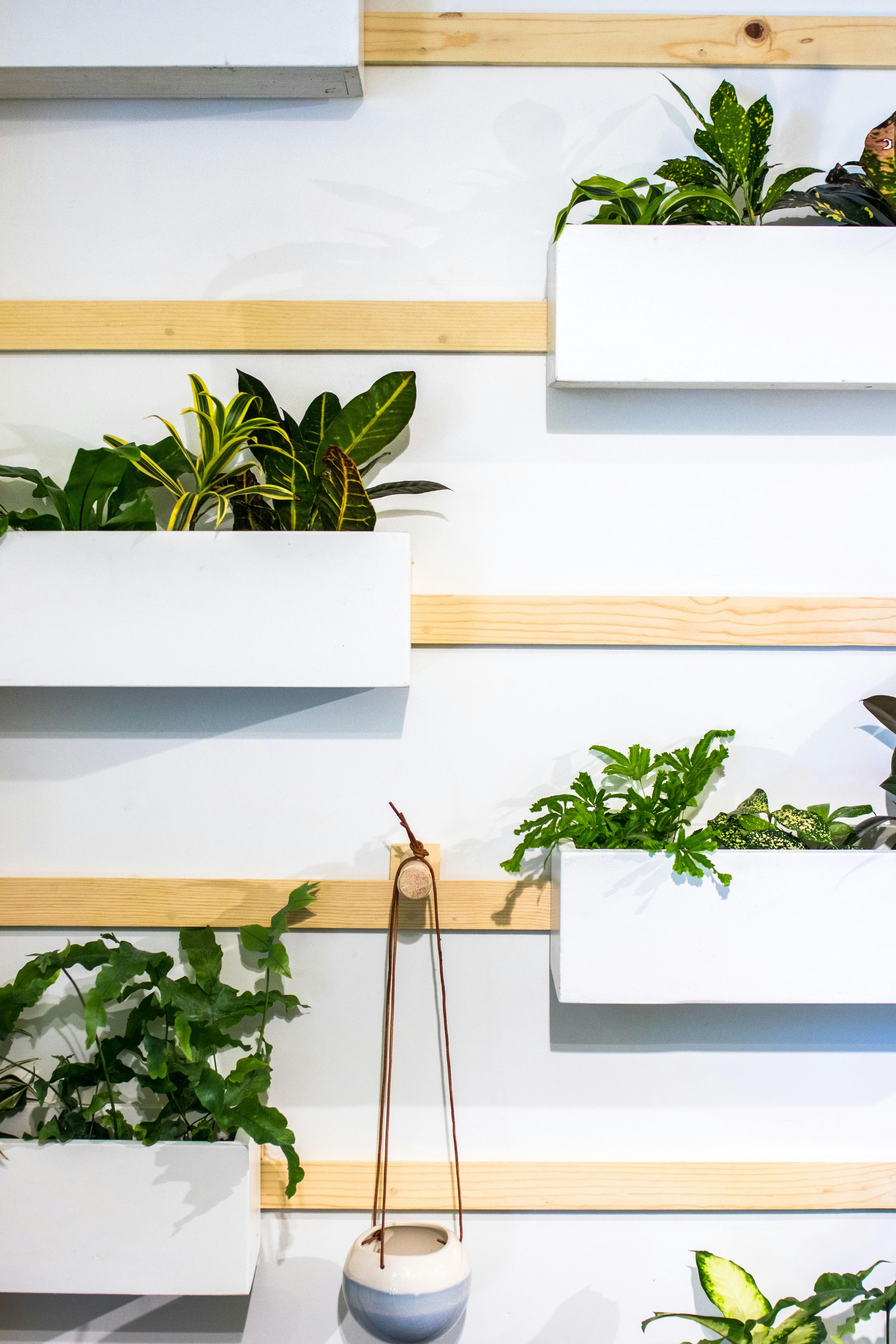Understanding Small Space Living
Small space living has become increasingly prevalent in modern urban environments due to rising population densities and a shift towards minimalism. As cities expand, more individuals and families find themselves residing in compact homes and apartments. This transition to smaller living quarters often presents both benefits and challenges that must be acknowledged and skillfully navigated.
One of the primary advantages of small space living is the opportunity for enhanced organization and simplicity. Fewer square feet naturally encourage inhabitants to evaluate their possessions critically, leading to a more clutter-free lifestyle. This downsizing can enhance mental well-being, promoting mindfulness and intentionality. Furthermore, smaller living spaces tend to require less maintenance and lower utility costs, making them financially appealing options for many, especially young professionals and retirees.
However, the challenges of small space living cannot be overlooked. Limited square footage often constrains functionality, making it imperative to utilize every inch effectively. The need for smart storage solutions and multipurpose furniture becomes essential in maximizing comfort. Balancing aesthetic appeal with practicality can also be difficult, as individuals strive to create a cozy atmosphere without overwhelming the space. For many, the quest for maximizing their small environment can lead to creative design hacks that transform their homes into cozy retreats.
As urbanization continues to shape residential trends, understanding the intricacies of small space living is crucial for those looking to thrive in such environments. Emphasizing efficient design and strategic planning can significantly enhance both comfort and functionality, ensuring that residents can enjoy their compact homes to the fullest. Advocating for intentional small space living allows individuals to adapt and find joy in smaller settings while establishing a sense of home.
The Power of Light: Brightening Up Your Space
Lighting plays a pivotal role in enhancing small spaces, as it can dramatically alter the ambiance and perceived size of a room. Natural light is particularly beneficial; it invigorates interiors and makes them feel more spacious. To maximize natural light, consider minimizing heavy window treatments that can obstruct sunlight. Instead, opt for sheer curtains or light blinds that allow daylight to filter through while maintaining privacy. Strategically placing mirrors across from windows can also amplify this effect, reflecting light and creating the illusion of depth. A well-placed mirror can transform a small area into a more expansive environment, effectively doubling the light that enters the space.
Beyond natural light, artificial lighting is equally important in small spaces. Layers of lighting, consisting of ambient, task, and accent lighting, can greatly enhance the functionality and aesthetics of your home. For instance, recessed lighting or wall sconces can illuminate areas without taking up valuable floor space. Pendant lights or chandeliers can serve as both a source of light and a design element, drawing the eye upward and creating an impression of higher ceilings.
When selecting light fixtures, it’s essential to consider the light temperature and brightness. Soft white bulbs can create a cozy atmosphere, while bright white or daylight bulbs are effective in workspaces to foster alertness. Utilizing dimmers in your lighting setup allows for adjustments in brightness depending on the time of day and your mood, adding to the flexibility of your small space. Choosing light colors for walls and decor can further complement your lighting choices, reflecting light and enhancing the overall brightness of the space. Through careful consideration of both natural and artificial light, the potential of small spaces can be significantly transformed, demonstrating the powerful impact of light in home design.
Choosing the Right Colors for a Spacious Feel
The selection of appropriate colors plays a crucial role in transforming small spaces into visually appealing and seemingly larger environments. The psychological impact of color should not be underestimated; it can evoke feelings of openness and comfort. For small rooms, lighter paint colors are generally recommended because they reflect more light, which contributes to an airy atmosphere. Shades such as whites, soft creams, and pastels create an illusion of spaciousness, drawing the eye upward and outward.
Monochromatic palettes further enhance this effect. By using varying shades of a single color, the design achieves a cohesive and harmonious look. This technique reduces visual clutter and creates a seamless flow within the space, thereby providing a more expansive feel. For example, a soft blue wall complemented by darker blue accents in furniture and decor maintains a unified aesthetic while adding dimension to the room. Additionally, utilizing the same color for both walls and trim can blur the boundaries within the space, giving it a larger appearance.
Incorporating accent colors can add character to small areas without overwhelming them. These hues can be introduced through accessories such as cushions, artwork, and decorative objects. When selecting accent colors, consider using bolder tones that contrast with the primary color scheme. This not only draws attention to specific features in the room but also adds depth to the overall design. Carefully chosen accents can promote a sense of individuality and make the space feel more inviting.
Ultimately, the right color choices can significantly influence the perception of size and comfort in small homes. By understanding the psychological effects of color and utilizing various techniques, homeowners can create inviting spaces that feel spacious and cozy, balancing functionality with aesthetic appeal.
Furniture Layout: Arranging for Comfort and Flow
Arranging furniture in small spaces requires a careful balance between comfort, functionality, and aesthetic appeal. A well-thought-out layout not only promotes ease of movement but also defines areas within a limited square footage. One effective approach is the open concept layout, which creates a seamless flow between different areas, making the space feel more expansive. By limiting physical barriers and incorporating multi-functional furniture pieces, such as a coffee table that doubles as storage, one can optimize utility without overcrowding the space.
Another strategic method involves zoning, where specific areas are designated for particular activities. For instance, positioning a small, cozy seating area in one corner can provide a reading nook, while a compact dining table in another area caters to meal times. Utilizing rugs can visually delineate these zones without requiring full enclosures, allowing for a sense of order and purpose in a small home.
When considering furniture arrangement, proportion and scale are crucial elements. Selecting appropriately sized furniture is essential; oversized pieces can overwhelm a small room while smaller items can create a sense of disarray. A guideline is to choose furniture that is visually light, such as items with legs that allow the floor to be visible underneath. This design choice fosters an airy feeling, preventing any sense of heaviness that may detract from the overall experience of the space.
Avoiding clutter is also vital in maintaining a comfortable atmosphere. This can be achieved through strategic placement of furniture and ensuring that every piece serves a purpose. Keeping pathways clear and allowing for easy flow between zones enhances accessibility, promoting a welcoming environment. Ultimately, a thoughtfully arranged living space not only enhances functionality but also cultivates a soothing atmosphere conducive to relaxation and enjoyment.
Multifunctional Furniture: Making the Most of Every Piece
In the realm of small space design, the selection of multifunctional furniture serves as a crucial strategy for maximizing both function and aesthetics. When living in compact environments, opting for pieces that can serve multiple purposes not only helps in conserving space but also enhances the overall utility of the home. Examples of such furniture include sofa beds, nesting tables, and storage ottomans, each providing distinct advantages that can significantly improve the quality of everyday living.
Sofa beds exemplify the ideal multifunctional solution as they combine the comfort of a traditional couch with the practicality of a sleeping area. They are an excellent addition for those who frequently host guests, transforming a living space into a guest room without compromising on style. When selecting a sofa bed, consider designs that feature mechanisms for easy conversion and aesthetically pleasing fabrics that harmonize with existing decor.
Nesting tables present another effective option for small spaces. These tables allow for efficient use of surface area, accommodating variations in needs without requiring excessive footprint. They can be neatly tucked away when not in use, providing flexibility and keeping the environment decluttered. When choosing nesting tables, it is advisable to select modular designs that can adapt seamlessly to the varied activities conducted within the space.
Additionally, storage ottomans serve a dual purpose, offering both comfort and functional storage solutions. These versatile pieces can act as seating, footrests, or coffee tables, while simultaneously providing concealed storage for items like blankets, books, or games. In selecting a storage ottoman, consider materials and styles that complement the existing decor while ensuring that it remains practical for everyday use.
Overall, integrating multifunctional furniture into small spaces not only helps maximize utility but also enhances the home’s overall design, ensuring that each piece contributes to a cohesive and harmonious living environment.
Smart Storage Solutions: Decluttering Your Home
In small homes, the challenge of maintaining an organized space can be daunting, but creative storage solutions can significantly improve functionality and ambiance. One effective strategy is the implementation of vertical shelving. By utilizing wall space, you can free up precious floor area and add visual interest. Floating shelves, built-in bookcases, or even ladder-style shelves can hold books, decor, and everyday items, effectively maximizing your space. Additionally, arranging items based on frequency of use ensures that essential items remain easily accessible.
Another strategy for managing limited space is incorporating under-bed storage. The area beneath your bed provides a fantastic opportunity to keep seasonal clothing, shoes, or even boxes of sentimental items neatly tucked away. Utilize bins or drawers designed specifically for this purpose, which can slide out easily for quick access. This simple intervention not only maintains a clean aesthetic but also effectively eliminates clutter that would otherwise overwhelm your living area.
Consider furnishing your home with multifunctional pieces that include built-in storage. Ottomans, coffee tables, and benches that serve as additional storage units can house items like blankets, games, or books, all while serving their primary function. This not only saves space but also enhances the overall aesthetic of a room by reducing visible clutter. Furthermore, investing in modular furniture that can be reconfigured to fit your needs can also be beneficial for achieving a sense of openness.
Moreover, adopting a minimalist approach plays a crucial role in maintaining organization in small homes. By thoughtfully curating your belongings, you can ensure that items serve a purpose or spark joy. Regularly assessing your possessions and letting go of items that no longer serve you is vital for creating a tranquil, clutter-free environment. By integrating these smart storage solutions, small spaces can transform into organized, inviting homes that reflect your personal style.
Vertical Space Utilization: Drawing the Eye Upwards
In small spaces, the effective utilization of vertical space is imperative for creating a sense of height and openness. One of the most impactful ways to achieve this is through the incorporation of tall bookcases. By opting for bookcases that reach close to the ceiling, one can maximize storage while drawing attention upwards. Additionally, arranging books and decorative items in an asymmetrical pattern can break the monotony and add visual interest, allowing the eyes to wander up and down the structure.
Another effective method is the installation of wall-mounted shelves. These shelves can be aligned at varying heights to create dynamic silhouettes on the walls, ensuring that the eye is naturally drawn towards the ceiling. Utilizing wall-mounted shelves not only provides extra storage but also offers a platform for decorative pieces that can enhance the verticality of the space. Items such as vases, framed art, or small sculptures can serve to punctuate the vertical lines, making the room feel taller and more inviting.
Hanging décor is also a valuable technique for enhancing verticality. This can include pendant lights, hanging planters, or artwork that is suspended from the ceiling. These elements can produce a striking focal point while enriching the atmosphere of the room. Strategically placing these items at varying heights will direct attention upwards, effectively transforming how the space is perceived. For instance, pendant lights hung at different elevations not only illuminate but also stimulate an upward gaze, fostering a sense of openness.
By integrating these elements, small areas can be transformed into visually compelling environments that celebrate vertical space. The combination of tall furniture, wall-mounted solutions, and hanging décor serves to create depth and interest, making the room appear larger and more cohesive. This simple yet impactful approach is fundamental in maximizing the potential of smaller homes.
Personal Touch: Adding Character to Your Small Space
Infusing personal style into small spaces can be achieved through thoughtful selections that enhance both aesthetics and ambiance. The goal is to create an inviting atmosphere without overwhelming the area, ensuring each item serves a purpose while reflecting your taste. Artwork plays a crucial role in establishing the character of a room. By carefully choosing pieces that resonate with you, whether they are photographs, paintings, or prints, you can create a focal point that draws the eye. Consider a gallery wall featuring a mix of artwork and personal photos; this not only adds visual interest but also tells your story.
Additionally, decorative items such as sculptures, vases, or unique collectibles can add layers to your decor. When selecting these items, it is vital to choose a cohesive color palette or theme that complements the space. This approach maintains a sense of unity, avoiding the feeling of clutter that can easily arise in smaller areas. Instead of overwhelming surfaces, opt for fewer, larger pieces that can stand out and create an impact, enhancing the character of your small space.
Another essential element to consider is the inclusion of plants. Introducing greenery not only brings life and vibrancy to your home but also contributes to a sense of tranquility. Choose low-maintenance plants that fit into your space, such as succulents or snake plants, which thrive with minimal attention. Utilize vertical spaces for hanging plants or shelving to avoid taking up valuable floor space while adding texture and warmth.
Ultimately, personalizing a small space is about making intentional choices that reflect who you are while keeping the overall design clean and open. By embracing these design hacks and incorporating meaningful elements, you can create a cozy, character-filled environment that feels distinctly yours.
Conclusion: Embracing Cozy Living
As we conclude our exploration of maximizing small spaces, it is vital to reiterate that small homes hold immense potential for stylish, functional, and cozy living. The design hacks discussed throughout this post demonstrate that with a little creativity and thoughtful planning, even the tiniest of spaces can be transformed into inviting retreats that reflect personal style and comfort.
One of the most critical takeaways is that each area, no matter its size, can serve a purpose while maintaining an aesthetic appeal. Incorporating multi-functional furniture, such as foldable tables or beds with storage underneath, allows for optimal use of space without compromising on comfort. Utilizing vertical space effectively by installing shelves or wall-mounted storage solutions can also dramatically enhance the functionality of smaller rooms.
Additionally, the importance of light cannot be overstated. Natural light creates an open and airy atmosphere that can make small rooms feel more expansive. Choosing a light color palette can further contribute to the illusion of more space, leading to a serene environment ideal for relaxation. Incorporating plants can also add vibrancy and life, making a small home feel warm and welcoming.
Ultimately, embracing the uniqueness of your small home means recognizing its charm and potential. As you embark on your journey toward maximizing your space, remember that cozy living is not about the size of your home but rather how you utilize it. Each small space can become a reflection of your personality by thoughtfully applying the design principles discussed. So, take the challenge of creating a comfortable and stylish abode, and enjoy the rewards of cozy living.







